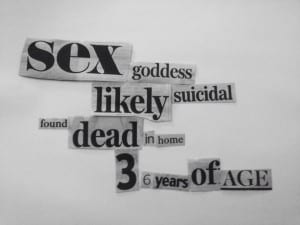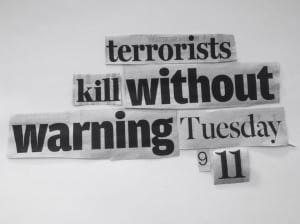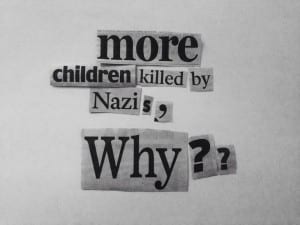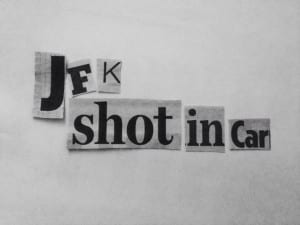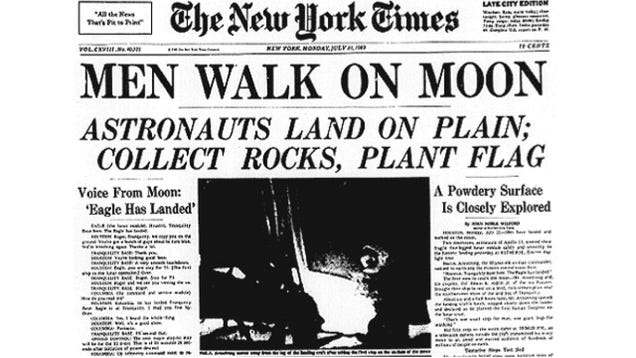So what moments of history matter?
Good question, and that’s not even the extent of it. What moments of history matter and we also could have something interesting to say. Two criteria to fill. Many options. When first thinking about the idea I was inspired quite heavily by the phrase “When you cut into the present, the future leaks out.” (Burroughs, undated) The idea that something pre-existing can be cut into, re-arranged or remixed, if you will, into something of the future in a form of divination. However I thought more about spinning it the opposite way. If you cut into the present, does the past leak out? I chopped up pieces of newspaper from today to created the headlines of the past. For example;
But then the interesting thing that could happen. How about you take the newspaper headlines from these big historic moments, cut them up and make a new truth?
“Marilyn found dead in suspected suicide” can become “Marilyn suspected dead”.
Suddenly it is questioned whether or not the fact she is dead at all becomes a conspiracy. Either way we decide to look at it it is important we pick big moments. Moon Landing, 9/11, Watergate, the coronation and so on. Moments that are not only well documented and commented on, but moments that could potentially have other elements otherwise unseen.
Works Cited.
Burroughs, W. (undated) When you cut into the present the future leaks out. [online] Available from http://coilhouse.net/2012/02/when-you-cut-into-the-present-the-future-leaks-out-william-s-burroughs-b-february-5-1914/ [Accessed 23 May, 2015]

